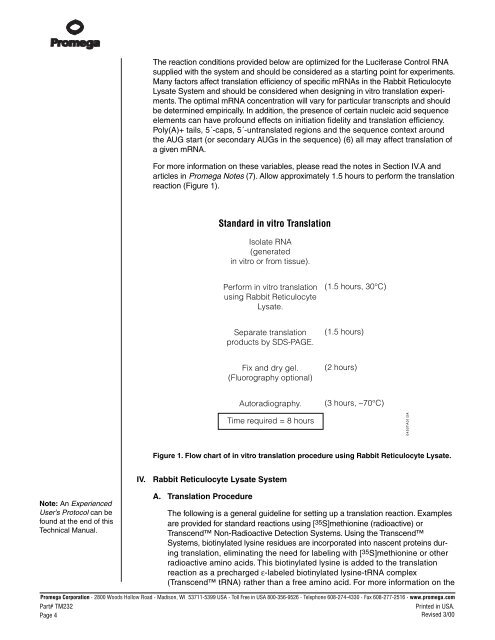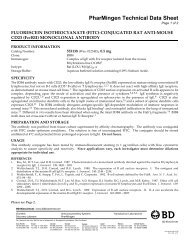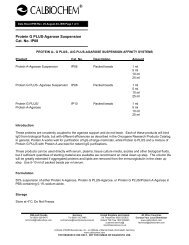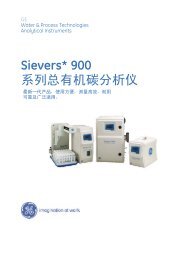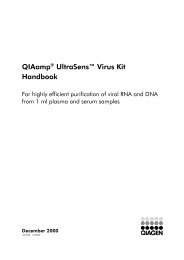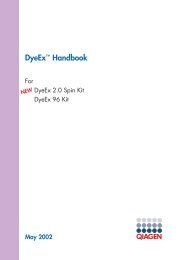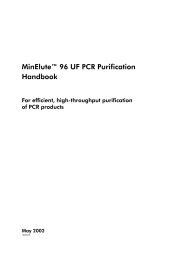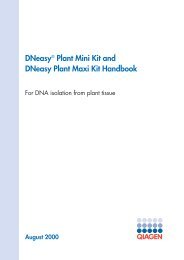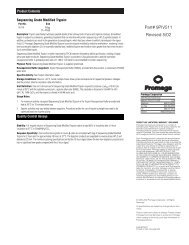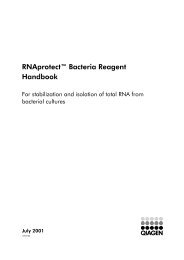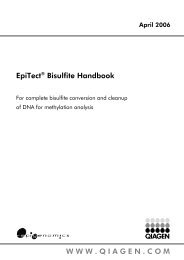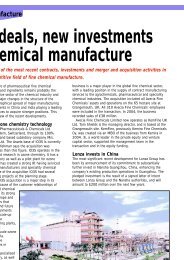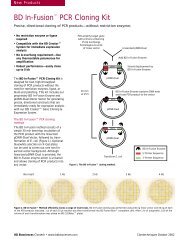Rabbit Reticulocyte Lysate System Technical Manual, TM232
Rabbit Reticulocyte Lysate System Technical Manual, TM232
Rabbit Reticulocyte Lysate System Technical Manual, TM232
You also want an ePaper? Increase the reach of your titles
YUMPU automatically turns print PDFs into web optimized ePapers that Google loves.
Note: An Experienced<br />
User’s Protocol can be<br />
found at the end of this<br />
<strong>Technical</strong> <strong>Manual</strong>.<br />
The reaction conditions provided below are optimized for the Luciferase Control RNA<br />
supplied with the system and should be considered as a starting point for experiments.<br />
Many factors affect translation efficiency of specific mRNAs in the <strong>Rabbit</strong> <strong>Reticulocyte</strong><br />
<strong>Lysate</strong> <strong>System</strong> and should be considered when designing in vitro translation experiments.<br />
The optimal mRNA concentration will vary for particular transcripts and should<br />
be determined empirically. In addition, the presence of certain nucleic acid sequence<br />
elements can have profound effects on initiation fidelity and translation efficiency.<br />
Poly(A)+ tails, 5´-caps, 5´-untranslated regions and the sequence context around<br />
the AUG start (or secondary AUGs in the sequence) (6) all may affect translation of<br />
a given mRNA.<br />
For more information on these variables, please read the notes in Section IV.A and<br />
articles in Promega Notes (7). Allow approximately 1.5 hours to perform the translation<br />
reaction (Figure 1).<br />
Figure 1. Flow chart of in vitro translation procedure using <strong>Rabbit</strong> <strong>Reticulocyte</strong> <strong>Lysate</strong>.<br />
IV. <strong>Rabbit</strong> <strong>Reticulocyte</strong> <strong>Lysate</strong> <strong>System</strong><br />
A. Translation Procedure<br />
Standard in vitro Translation<br />
Isolate RNA<br />
(generated<br />
in vitro or from tissue).<br />
Perform in vitro translation<br />
using <strong>Rabbit</strong> <strong>Reticulocyte</strong><br />
<strong>Lysate</strong>.<br />
Separate translation<br />
products by SDS-PAGE.<br />
Fix and dry gel.<br />
(Fluorography optional)<br />
Autoradiography.<br />
Time required = 8 hours<br />
(1.5 hours, 30°C)<br />
(1.5 hours)<br />
(2 hours)<br />
(3 hours, −70°C)<br />
The following is a general guideline for setting up a translation reaction. Examples<br />
are provided for standard reactions using [35S]methionine (radioactive) or<br />
Transcend Non-Radioactive Detection <strong>System</strong>s. Using the Transcend<br />
<strong>System</strong>s, biotinylated lysine residues are incorporated into nascent proteins during<br />
translation, eliminating the need for labeling with [ 35S]methionine or other<br />
radioactive amino acids. This biotinylated lysine is added to the translation<br />
reaction as a precharged ε-labeled biotinylated lysine-tRNA complex<br />
(Transcend tRNA) rather than a free amino acid. For more information on the<br />
Promega Corporation · 2800 Woods Hollow Road · Madison, WI 53711-5399 USA · Toll Free in USA 800-356-9526 · Telephone 608-274-4330 · Fax 608-277-2516 · www.promega.com<br />
Part# <strong>TM232</strong> Printed in USA.<br />
Page 4<br />
Revised 3/00<br />
0450TA01/2A


